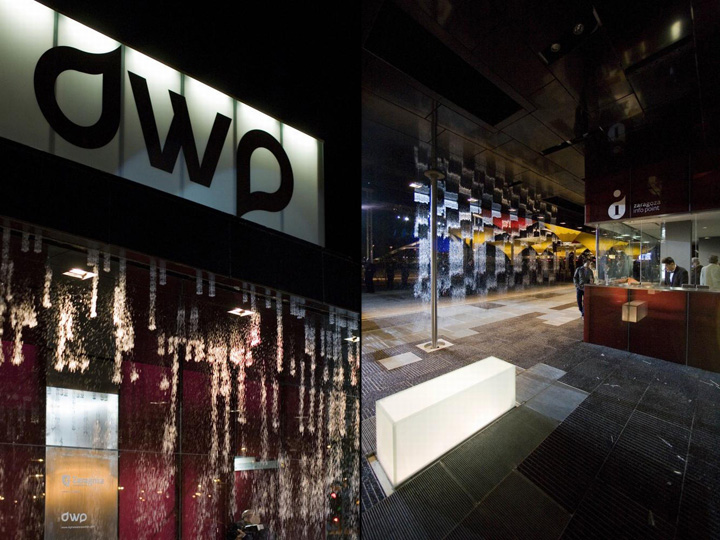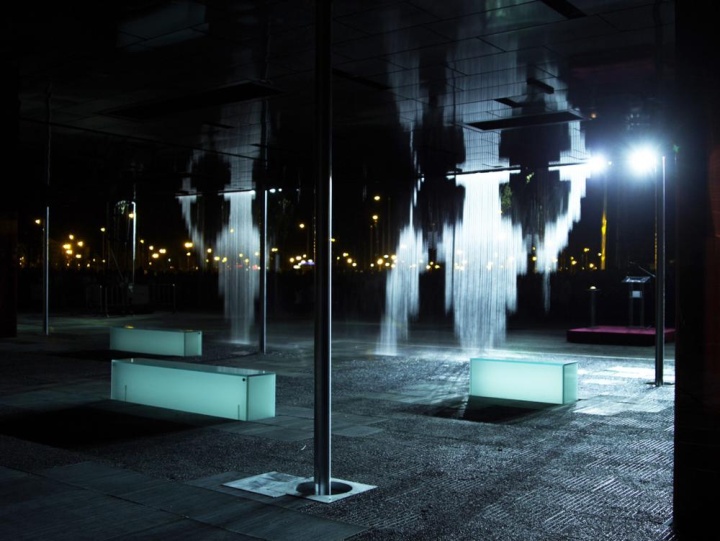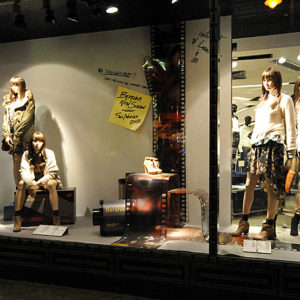


Designed for the Zaragoza Expo 2008, the DWP is not a project meant, like many others, to seduce the visitor by the sheer power of its architectural form. Its geometry could hardly be simpler: a rectangular shape in which two boxes are respectively devoted to an information point and a tourist centre. The challenge was to use water – the theme of Expo 2008 – as an architectural element.

The walls are composed of digitally controlled water droplets, which can generate writing, patterns or access spaces. The result is a space that is interactive and reconfigurable in that each wall can potentially become an entrance or exit, while the internal partitions can shift depending on the number of people present. The only material elements are the two boxes and the roof, which is a sort of curtain that can move vertically and flatten to the ground removing the presence of the pavilion entirely.

The DWP is without a doubt the clearest expression given up to now to the question that carlorattiassociati and the senseable city lab have been raising since early on: what architectural consequences should be drawn from the pervasive presence of digital media in the world that surrounds us? The Digital Water Pavilion was TIME Magazine as ‘Best Project of the Year’ in 2008.
Architects: Carlo Ratti Associati
Photography: Claudio Bonicco, Max Tomasinelli, Ramak Fazel, Walter Nicolino, Guy Hoffman, Matteo Lai.
Design team: carlorattiassociati | walter nicolino & carloratti, preliminary design with Claudio Bonicco, executive design with Matteo Lai

























Add to collection











